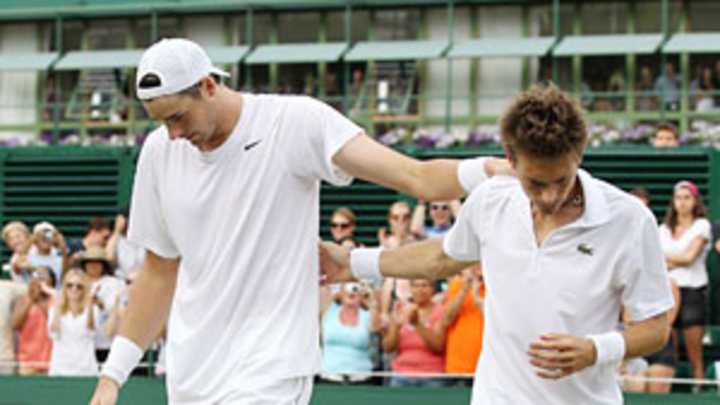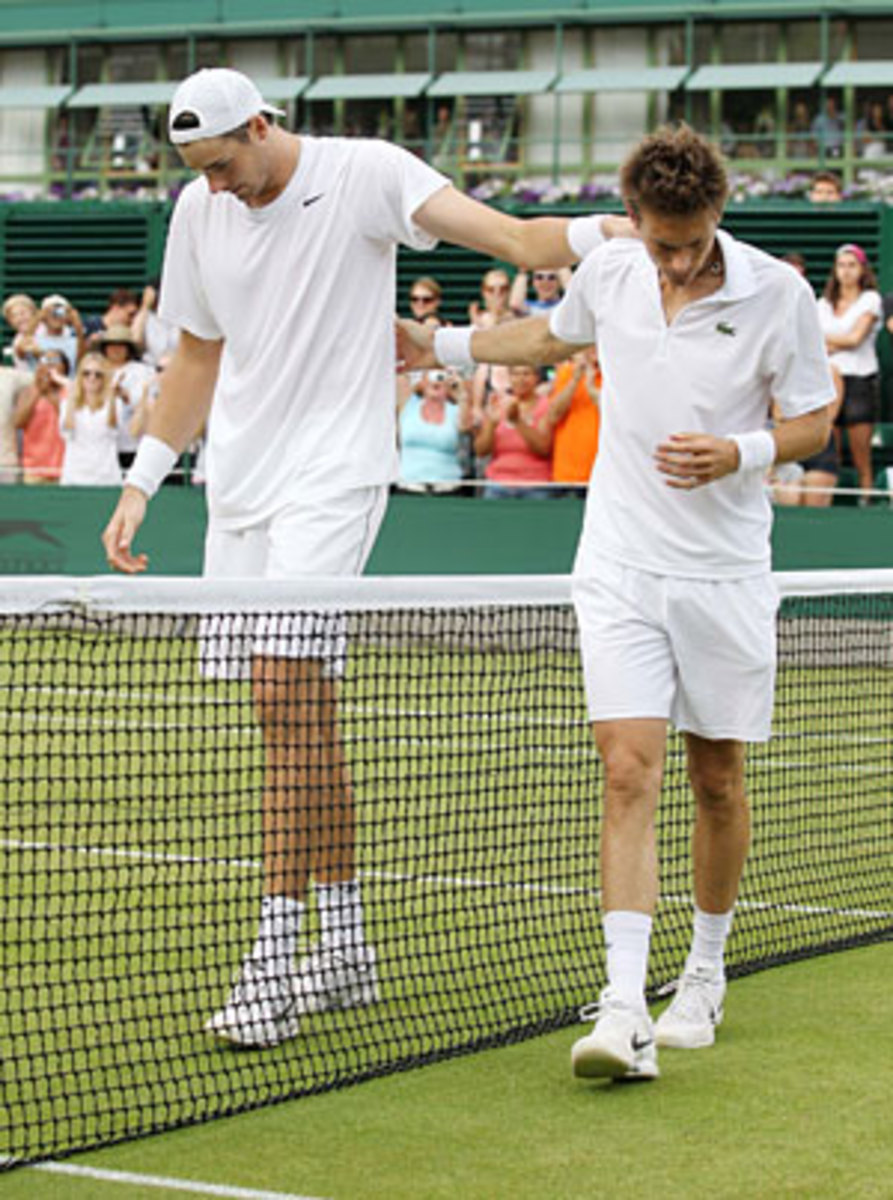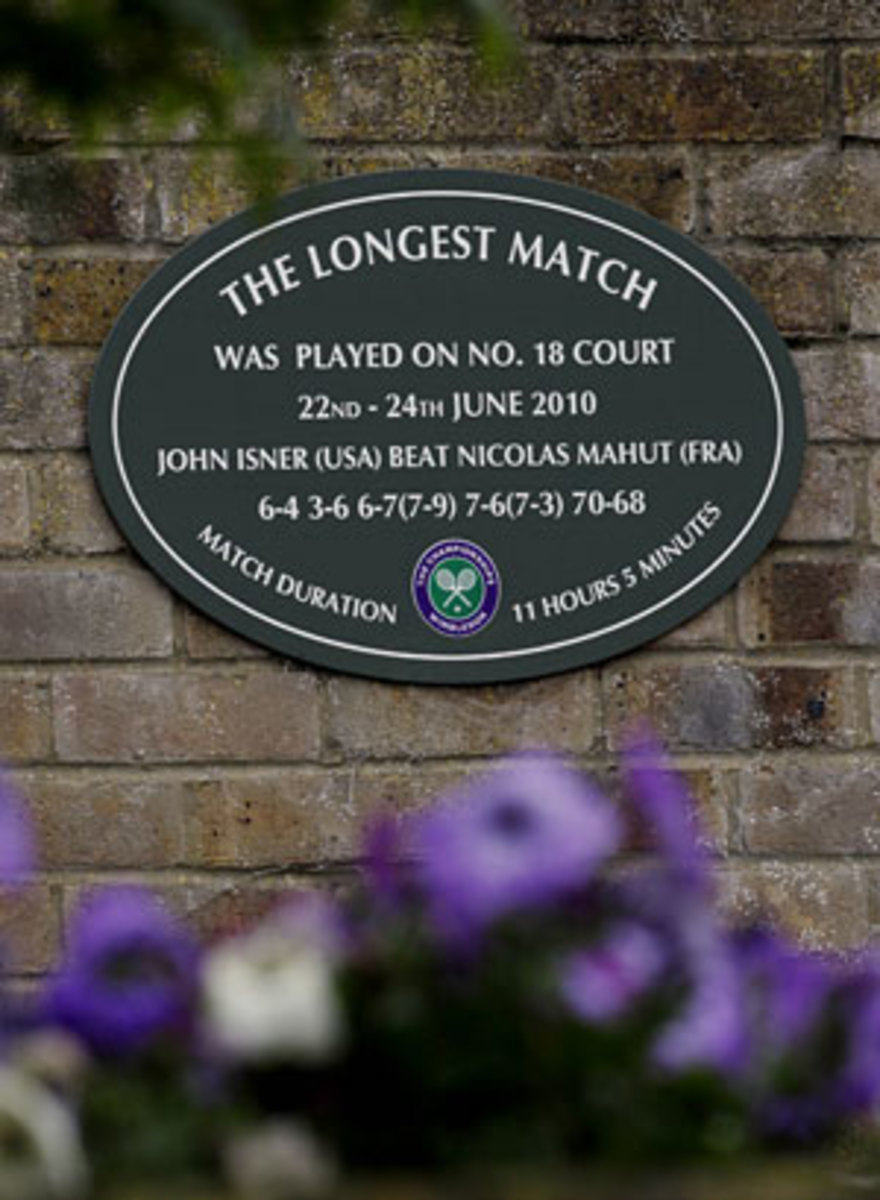Isner-Mahut II: What were the odds?


John Isner (left) and Nicolas Mahut (right) played the longest match in history in the first round of last year's Wimbledon. They meet again Tuesday. (AP)
Wimbledon might be the most dignified sporting event going. But when the draw was released on Friday, there were fears that tournament had gone low-brow, taking a leaf from the pro wrestling playbook and orchestrating a rematch sure to generate hype and attention.
Last year, what John Isner and Nicolas Mahut played was less a tennis match than a Herculean Labor. Their first encounter spanned three days and ended with Isner winning 70-68 in the fifth set. We could start ticking off the various records this match set -- unlikely ever to be broken -- but there are space constraints. As Andy Roddick put it: "[A match of this length is] never, ever gonna come close to happening again. Like normally records in sports you say, you know, OK, eventually it will be broken. That will never be broken, ever, ever, not even close." It might be more illustrative to link to this. How many other first round matches generate their own Letterman Top Ten List?
It was, then, more than a little suspicious when the pairings were announced for Wimbledon 2011 and John Isner’s first round foe would be ... Nicolas Mahut. The Twitter consensus was that the fix was in. Even Andy Murray, the Great British Hope, tweeted: “Isner vs mahut drawing each other in the first round after last year is the most amazing thing I've seen in tennis!”
The gents at the All-England Club, however, have been adamant that this was simply random chance, the draw deities acting in strange ways. Taking the "random" explanation at face value, how random was this? With an assist by Toronto reader Gilbert Benoit, we try and figure it out. It’s fairly simple. With one twist.
Each Grand Slam tournament draw includes 128 players. However, the top 32 players are seeded and placed in the draw first. That leaves 96 slots for the others, in this case including Isner (No. 46) and Mahut (No. 99).
Let’s consider Isner and Mahut and ignore the other players in the field.
• Pick either player. Say Isner. If he is drawn against a seed, he will not play Mahut. There are 96 possible slots where he can be drawn, and 32 of those will be against a seeded player, so he has a 2/3 chance of not playing a seed.

A newly minted plaque on the wall of Court 18 at the All England Club commemorates last year's historic marathon match between Isner and Mahut. (AP)
• Then, we consider the conditional probability of Mahut drawing Isner, assuming that Isner is not playing a seed. There are 95 slots left, so the probability is 1/95.
• We obtain the probability by multiplying the conditional probability (1/95) by the probability that governs the condition (2/3), and we obtain 2/285.
This is simple, but is it right? Benoit helped us reach the same conclusion in a completely different way, using straight combinatorial reasoning.
• There are 96 players to be drawn. This can obviously be done in 96! ways. Now, how many of these draws have Isner playing Mahut?
If you discard the 32 slots opposite a seed, there are 64 slots left. You can think of them as 32 two-player buckets. Isner and Mahut will play each other if they both fall in any of these 32 buckets, so there are 32 possibilities.
Within the bucket, there are 2! ways that the two players can be ordered.
Then, there are 94! ways for the other players to be drawn. So, there are 32 × 2! × 94! draws that pit Isner against Mahut.
The probability is then (32 × 2! × 94!)/96!, which simplifies to 64/(95×96), which is 2/285.
Two in 285 is a long-shot, obviously less than 1 percent. The conspiracy theorists were busy last month when the Cleveland Cavaliers -- spurned by Lebron, desperate for some good fortune, represented by a endearing teenager afflicted with a rare disease -- landed the top pick in the NBA Draft. It seemed too perfect for some (not least, Minnesota Timberwolves executive David Kahn) but the odds of that happening were 2.8 percent, almost a lock compared to the odds of Isner-Mahut II.
Yet truth is, events with a likelihood of one percent happen all the time in sports. We just don’t always appreciate the randomness. Now if the Isner-Mahut sequel manages to outstrip the original? Then we’d be within our right to suspect that the fix is in.
senior writer Jon Wertheim is co-author of the New York Times bestseller
Scorecasting: The Hidden Influences Behind How Sports are Played and Games Are Won
now available online and in stores
